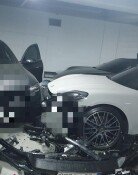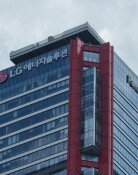Chinas Take-It-Or-Leave-It Proposition
Chinas Take-It-Or-Leave-It Proposition
Posted April. 01, 2005 23:25,
If you want to make money here, give us FINEX.
POSCO, who has announced its plan for large-scale investment in China, is facing an unexpected obstacle because the Chinese government has asked for FINEX in return for permitting the establishment of its factories in China.
FINEX is a brand-new steel-making process that was developed by POSCO last year. This technology, unlike the outdated blast-furnace technology, is low-cost and environmental-friendly.
It is difficult to accept Beijings request because of the possibility of core technology leakage. However, given Chinas enormous potential market, it is not a matter we can simply ignore, said a source from POSCO.
A number of investment plans for China that are launched by domestic companies have come up against a snag due to Beijings new policy direction that controls its economy from overheating by screening foreign investments.
INI Steel Company, the second largest steel company in Korea, gave up its plan of establishing a steel rolling line in Chinas Liaoning Province last year, which was expected to cost 140 billion won, because the Chinese government did not permit its project, saying, We dont need inferior technology any more.
It is practically impossible to obtain a clearance from the Chinese government if ones want to make investments related to steel-making, said a source from INI Steel Company.
Now is it Steel Companies that are Suffering from such Complicated Procedures?-
The Chinese government raised the minimum capital requirements to 200 million yuan (approximately 26 billion won) and obligated the establishment of R&D centers for foreign companies that plan to make investments in its cellular phone industry. As a result, without a large amount of capital and high technological power, no company can even establish factories on Chinese soil.
Starting this month, a tariff rate of imported car parts increased from 14 percent to 30 percent, which makes it unprofitable to produce cars by assembling parts in China that are imported from Korea.
Even one or two years ago, China was very busy attracting foreign investments. What has made China change? Chinas worries about economy overheating that were exacerbated by duplicated foreign investments and that stimulated Chinas entry into the WTO in late 2001 are often cited as the primary reasons.
However, going beyond such a superficial interpretation, we can notice Chinas sophisticated tactics in selecting foreign capitals. Experts point out that Chinas strategy of attracting foreign investment has focused on efficiency. Therefore, whether technology transferring comes along with investment has become a very important factor in its decision.
Domestic companies are now in a dilemma. They need a local production base in order to make inroads into the enormous Chinese market. Such change comes as a great obstacle they have to tackle.
In particular, if the companies hand technology to China as requested, in the long run, China may threaten Korean companies again in a boomerang-like effect.
One executive of a company that has plans for investment in the Chinese market said, It is very difficult to deal with this problem because the Chinese government permits the investment in its market under the condition of transferring technology, rather than directly asking.
However, Beijing is very keen on attracting up-to-date technology. According to Jeong Sang-eun, a senior researcher of a Chinese economy section at the Samsung Economy Research Institute (SERI), Even Chinas high-ranking officials asked Samsung to establish factories for the early producing process of semiconductors. Due to the possibility of technology leakage, executives are now having a hard time.
The pre-process of semiconductors is a core technology that includes designs and plans. In China, there exist only post-process factories of semiconductors, which is for simple process of assemblage.
Chang-Won Kim Byong-Ki Lee changkim@donga.com eye@donga.com







